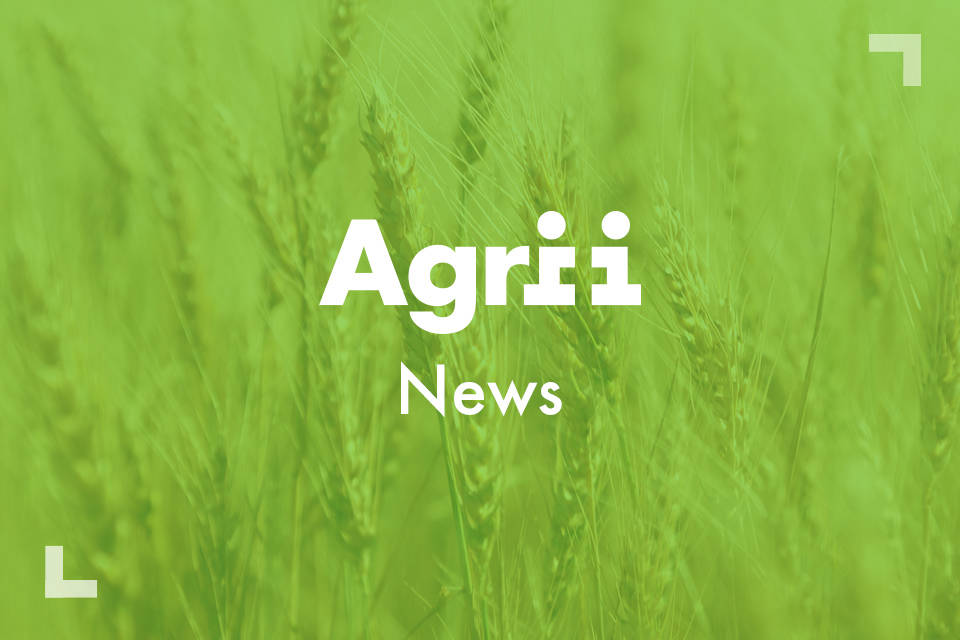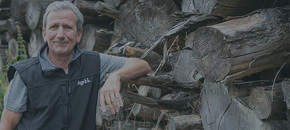
Guide: How to get the most out of a grassland reseed this spring
News - 08.04.24
With many livestock farmers hoping to carry out much needed reseeds this spring following several difficult years for grassland. Following a systematic approach to planning, establishment, and management, can help you reap the biggest benefits.
Adam Simper: National Grass, Roots & Environmental Seeds Manager, gives his reseeding guide for successful grass production.
Start with the end in mind
Define your grassland goals
The best starting point for a successful reseed is to focus on the end point and establish what you want to achieve over the period your reseed is designed for. You need to focus on your end goal and make decisions based on this.
Ask yourself: How long do you want the mix to last? What do you intend to use it for?
Whether it's cutting, grazing, or both, defining your objectives will guide your decision-making process.
Choose the Right Mix
Select a grass seed mix tailored to your specific needs and management style.
If you want to both cut and graze, for example, choose a mix containing diploids and tetraploid perennial ryegrass (PRG), whereas if predominantly cutting, choose a mix with a higher proportion of tetraploid as these will yield better, regrow quicker and are naturally higher in water soluble carbohydrates which will aid the fermentation process.
If your plan is rotational grazing, then choose a mix that can cope with this style of management and provide good ground cover and quick regrowth. If intensively tight grazing, then use a mix with a high diploid PRG content.
Consider Species Characteristics
Each seed species offers unique quality and grass growth characteristics. Whether it's clovers, herbs, Timothy, cocksfoot, or Festuloliums, understanding their attributes is essential for selecting the most suitable varieties for your soil and situation.
Most reseed mixes in the UK contain both diploid and tetraploid PRG but there are also other types of ryegrass and species used such as clovers, herbs, Timothy, cocksfoot, and in recent years Festuloliums.
Each of these species has different growth and quality characteristics so it is important to select the most appropriate one for your ground and situation.
Whatever the mix you decide on, it's important to make sure the grass and clover varieties within it are on the latest Grass and Clover RL.
This will ensure higher yields, better D values, improved disease resistance, increased ground cover, improved winter hardiness and a better return on investment compared to non-listed varieties.
Consult with Experts
Seek advice from your grassland advisor early on, to ensure you choose the right seed varieties for your needs. We can provide valuable insights based on local conditions and your specific requirements.
Tailoring to Soil Type, Duration and Purpose
Assess Soil Conditions
The next thing to consider is soil type, with festuloliums being particularly useful on dry land.
They've got increased stress tolerance from the fescue in them. A higher proportion of deep rooting tetraploids may also help as they have an extensive rooting system that can scavenge for moisture very effectively.
On heavier soils, diploid PRG may be better as they tiller out more and provide a dense base which will help prevent poaching.
Make sure your mixture is fit for purpose
You need to think about how long you want the grass ley to last and make sure varieties within the mix will go the full distance. A mix containing early perennial ryegrass varieties, for example, will only last 4-5 years so these varieties would not suit a long-term mixture lasting 7 years.
A 3-4 year cutting mix should not contain any Italian ryegrass as they only last 2 years. It may cheapen the mix but the production would drop dramatically in years 3 and 4, meaning the ley isn’t fit for purpose.
If grazing and early spring growth is important for an early turnout, then intermediate perennial ryegrasses should be used.
They will last longer than early perennial ryegrass and still produce early spring growth which would suit medium and long-term grazing, cutting and dual purpose mixtures.
If your soil type and location don’t allow you to turnout early, then a mixture containing all late perennial ryegrass should be considered as it will start growing slightly later in the growing season so less grass is wasted in the sward.
You also need to factor in field location as this will impact whether you want to cut or graze the sward. Also, if a field is close to the farm and gets used a lot, you may then want to use a mix with a high diploid PRG content which will provide greater ground cover.
Choosing whether to include clover or not is another option that needs consideration.
If significant weed problems are expected, then a no clover mixture is wise. You can consult your agronomist about an appropriate herbicide strategy and once the weed issues are addressed, the clover can be introduced at a later date.
Getting started with reseeding
Preparation is Key
Once the basic decisions have been made, it's time to get the reseed underway and tackling the practical issues in a logical manner will make the task simpler and lead to better results.
Firstly, you'll need to address any compaction or drainage issues within the field and clear drainage ditches to ensure all outflows are working correctly.
Destroy the old sward using a product containing glyphosate. Sufficient new growth is required for this to be most effective, and you should always ensure the appropriate rate is applied under correct conditions.
Optimise Soil Nutrition
Nutrition is going to be important too. Get a soil sample and analyse the pH, P and K indices.
Put on any farmyard manure and then plough and press before applying seedbed fertiliser as suggested from the soil sample results. Apply any lime to achieve 6.5 pH at a maximum of 5t/ha (2t/acre) and split dress if more is required.
Seedbed Preparation
You can then work the soil down to prepare a fine, firm seedbed before ring rolling and drilling the seed onto the rolled seedbed to a depth of 1cm.
If broadcasting, lightly harrow and then roll, whilst if drilling you can just roll to ensure maximum seed to soil contact. Rolling will also help to reduce moisture loss.
Temperatures need to rise to achieve satisfactory germination and growth. Perennial ryegrass will not germinate until the average daily soil temperatures are above 5°C and clovers above 8°C.
Monitor Sward Germination and Growth
Once visually established, pull at the grass blades with your thumb and finger and if the root system is pulled out then delay grazing. If the roots stay in the ground and the grass blades rip off, then you can graze periodically from 8-12cm down to 4-6cm.
This will encourage tillering and a dense leafy sward. Gentle first grazings also allow sunlight to reach and stimulate the grass tiller buds and the clover’s growing points.
Why is regular reseeding important?
Worn out swards have a very different species make-up and lack the ability to utilise nitrogen efficiently compared to fresh reseeds.
Within a few years of establishing a new ley, weed grasses will ingress into a sward especially after a hard winter or if the land has been poached and these will produce significantly lower yields and lower quality forage.
The palatability and digestibility will also be poorer which will all result in a reduction in animal performance and profitability.
These weed grasses also don’t respond to nitrogen fertiliser inputs as efficiently as ryegrasses so you'll also be wasting valuable nutrition resources, which is something few producers can afford to do in the present circumstances.


Cost benefits and ROI from reseeds
On average reseeded grassland is likely to produce a modest yield of around 8750Kg DM yield/ha compared to 7000Kg DM yield/ha from tired pasture, plus you can expect an ME of 11.5 Mj/kg DM from the reseed compared to 10.5 Mj/kg DM for old grass.
All together, that's going to result in an extra 27,125 MJ ME/ha which at 5.4 MJ ME/litre, will deliver 5000 litres more milk/ha.
The cost of your reseed is probably going to be around £680/ha so an extra Income of around £1750/ha will produce an extra income of £1070/ha once reseed costs are taken into account.
That's a sizeable return on investment and clearly illustrates why hanging on to grass leys beyond their useful life, is always a false economy.

Investing in reseeding yields significant returns, with reseeded grassland producing higher yields and quality compared to tired pastures.
The cost of reseeding is outweighed by increased productivity and profitability in the long run.
By following a systematic approach to reseeding, you can rejuvenate your pastures and maximize productivity for years to come. With careful planning, species selection, weed control and, implementation, you'll reap the rewards of healthier, more resilient long-term grassland.
Join Our Community

Agrii X
We love engaging with clients and partners. Give us a follow and let's share stories for the community.

Agrii Instagram
A picture paints a thousand words. Follow us on Instagram to see what we are up to.

Agrii Facebook
Follow us on the worlds biggest social media site for the latest news and events straight to your feed.

Agrii LinkedIn
If you are all about the business, connect with us on LinkedIn to build your network
Stay In Touch

Newsletter Sign-Up
Receive email updates on topical news and information from around Agrii and UK Farming.

Listen To Our Podcasts
Listen to the Tramlines Podcast. Fortnightly chat about agriculture and trials with your host Tony Smith.

Agrii Insights
Read essential agri intelligence for profitable farming.

Find an Event
Join us for our upcoming events and tours.



